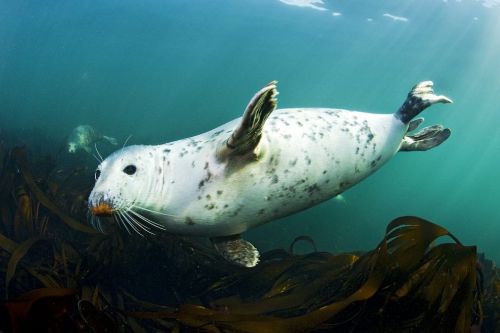We have already seen how the rise in temperature is melting away the ice at the poles making the life of polar bears and penguins difficult. Melting ice at the poles is making these animals look for alternate hunting and breeding places. Apart from polar bear other marine animals like ringed seals, gray seals and beluga whales are exposed to these problems. Now researchers have found another challenge that these animals are facing- exposure to new diseases.
The arctic waters are now experiencing the emergence of a disease caused by a parasite known as Sarcocystis pinnipedi, which is quickly travelling south infecting and killing almost 20 percent of the gray seals population. This parasite is a relative of S. canis, which can adversely affect bears and can be the reason for hepatitis and encephalitis in young dogs.
With melting of ice, more humans and shipping companies are moving further inward. Along with humans, parasite species that are found in the litter of cat and kittens, known as Toxoplasma gondii are reaching north and somehow reaching the oceans and is now spreading diseases in beluga whales.
Head of Molecular Parasitology, Michael Grigg, at the National Institute of Allergy and Infectious Diseases in Bethesda, Maryland says that the change in climate gives pathogens favorable chances to explore new environments and cause new infection and diseases. He further adds that Toxoplasma is commonly found in warm-blooded vertebrate, but its presence is beluga whales are relatively new.
These parasites are tough and are not killed by treating them with chlorine bleach or dilute sulfuric acid. Freezing or boil is the only effective way to control these species of parasite. And in the arctic where the temperature is rising makes an ideal environment for these them survive and reach its host.
Like Toxoplasma, Sarcocystis pinnipedi parasite flourishes in warm waters of the arctic. And with the melting of ice, fishes like cod and capelin are travelling farther in the north and the gray seals in search of food hunt them and thus get infected with the parasites. The S. pinnipedi now has encountered a new host as gray seals apart from its usual host of the ringed seal. In 2012, in Nova Scotia, the parasite S. pinnipedi was responsible for the loss of 406 gray seal lives living on Hay Island (map). Upon conducting necropsies, the cause of the deaths of gray seals was found to be damaged liver.
When the parasite S. pinnipedi reaches its host, the gray seals, it starts behaving like a cancerous cell and constantly replicate inside the liver of the host, until they organ gets destroyed. Normally the parasite keeps duplicating, until some agent from within the host body tells it to stop and convert into cyst stage and wait till its find new hosts to invade. Ringed seals have over the time evolved to handle these parasites, but unfortunately, this does not takes place in gray seals and so the parasite ultimately kills the seals.
Researchers are now collecting feces samples of ringed seals and their meat eaters as polar bears, to follow the life cycle of the S. pinnipedi. But ultimately the animals will have to find a way to tackle them and there is nothing much that humans can do. And slowly the gray seals will develop its immune system and a balance will be achieved. As far as humans are concerned, we should make sure that we don’t make life difficult for these animals who are already fighting a battle for survival with a change in environment and food availability.




